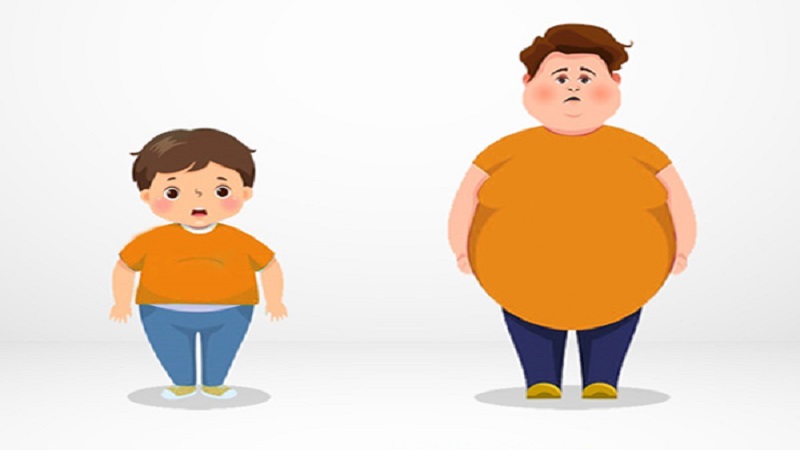 Representational image
Representational image Saiyan Karim, a 17-year-old student at an English medium school in Dhaka, is facing many health challenges due to his obesity as his mother couldn’t take care of him properly because she passes a busy schedule in running a technology firm.
Saiyan’s daily routine includes excessive screen time, irregular eating habits, and a preference for fast food over home-cooked meals. This lifestyle has led to a significant weight gain over the past few years.
Obesity and overweight are conditions characterized by an excess accumulation of body fat that can have adverse effects on health.
The World Health Organization (WHO) reports a concerning rise in obesity rates globally, particularly among children and adolescents.
It is projected that one in eight individuals will be classified as obese shortly. The escalating rate of obesity not only impacts individual health but also presents a significant economic burden.
Research indicates that by 2025, the cost of treating obesity-related illnesses could surpass 920 billion pounds worldwide. Recent statistics highlight a troubling trend in Bangladesh, where the prevalence of obesity among children and adolescents has more than tripled over the last two decades.
The Bangladesh Bureau of Statistics (BBS) reveals a sharp increase in obesity rates among this Demographic which signals a pressing public health issue.
Meanwhile, Bangladesh, according to recent statistics, is not behind in this regard as obesity among children and adolescents has increased more than three times in the last 20 years, which is quite alarming.
Bangladesh Bureau of Statistics (BBS) said the number of children (age 0-17 years) is 56.9 million which is 33 percent of the total population and the number of adolescents (aged 15 to 19 years) is over 17.1 million out of the total 170 million population.
According to the information provided by the Department of Endocrinology and Department of Children of the Bangabandhu Sheikh Mujib Medical University (BSMMU), obesity and overweight among children and adolescents was 4-5 percent in the country 20 years ago, now it has increased to 14-15 percent.
Meanwhile, a study by the International Centre for Diarrheal Disease Research, Bangladesh (ICDDR,B), the international health research organization, and the Public Health Nutrition Institute disclosed that nearly 21 percent of children and adolescents in Dhaka city are suffering from the problem of physical obesity.
Another study by BSMMU in 2014 also found that the rate of obesity among children and adolescents is lower in rural areas, but higher in urban areas. The obesity rate is only 1.2 percent in rural areas and 5.6 percent in urban areas respectively. Boys are more obese, with a rate of 11.7 percent while this rate is 7.5 percent among girls.
Talking to BSS, the Head of Pediatric Cardiology of the National Heart Institute and Hospital, Dr Abdullah Shahriar, said childhood weight gain or obesity can have many reasons, including having a lot of study pressure, unhealthy eating habits like having fried food - junk or fast food or low quality tasty processed food and having excessive sweet and cold drinks etc.
Also, irregular lifestyle such as not doing sports, exercising or jogging, staying continuously idle, being always on the Internet or watching excessive television, feeding children extra food to improve health and mental stress are among them causes of obesity, he also mentioned.
Apart from these, sometimes genetic factors and side effects of medications can cause obesity problems in childhood and adolescence, the physician added.
Terming obesity now identified the mother disease or the main disease worldwide, chief Nutritionist of Diet Counselling Centre Sayeda Sharmin Akhter said, “If obesity occurs in children and adolescents, they are likely to develop juvenile diabetes, hypertension, hyperlipidaemia, hormonal imbalance.”
Along with depression, problems in personality development, penis shortening in boys, ovarian cysts in girls and irregular periods, reluctance to eat, stomach cramps due to not eating for a long time resulting in him or her becoming more sick days by day and no treatment works at this time, she pointed out.
Medical experts caution that childhood obesity can lead to serious health consequences in adulthood. Factors such as sedentary lifestyles, unhealthy dietary choices, and genetic predispositions contribute to the rising obesity epidemic among youths.
Efforts to address this crisis are underway, with government initiatives aimed at promoting overall nutrition and health for adolescents. Collaborative efforts involving various ministries, UNICEF, and other stakeholders are focused on providing essential nutritional services to young individuals.
The implementation of early childhood nutrition education initiatives in secondary schools across the country underscores the government’s commitment to combating juvenile obesity and ensuring the well-being of future generations.







